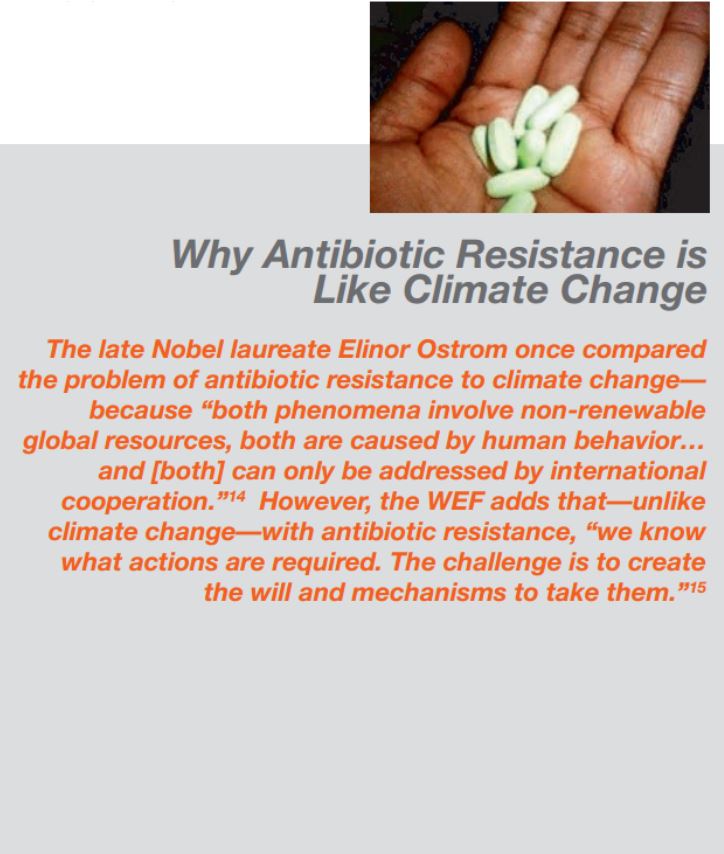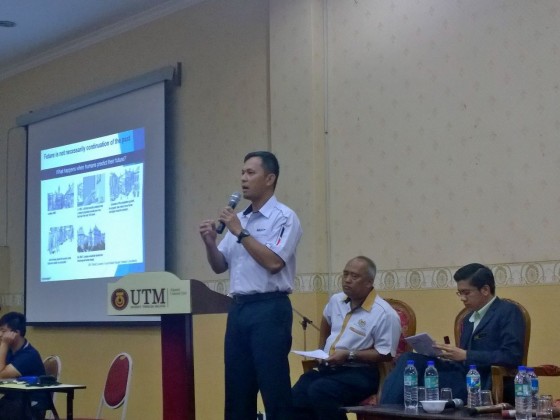The world is slightly more at risk then it was a year ago, according to Global Risks 2013, the eighth annual edition of this authoritative series on global risk from the World Economic Forum (WEF). According to the 1,000-plus experts surveyed by WEF, almost all of the top 50 global risks identified in 2012 are deemed more likely to manifest in the next 10 years than they were in 2012. Many were seen as having greater potential impact than a year ago as well. Building on the survey data, the WEF called out three constellations of interrelated risks that it considers most urgent for political and business leaders to consider:
- The dysfunctional interplay between global economic and environmental issues
- “Digital wildfires”—viral transmission of misinformaton over social media
- The rise of antibiotic-resistant superbugs, with potentially severe consequences for human health and food production
This myForesight® brief evaluates the WEF’s findings and assesses their implications for businesses.
The top five risks in 2013 are very similar to those in 2012. The few differences are meaningful in that they reflect shifts in the global understanding and conversations around these risks. Figure 1 presents the risks that experts deemed most likely to manifest in the next decade. Figure 2 lists the risks expected to have the greatest impact if they come about. Comparative rankings are presented from 2012.
Notable takeaways from the Top 5 lists include:
- Economic and environmental risks dominate, together comprising four of the five top risks in terms of both likelihood and impact.
- The climate debate is shifting. The top climate-related risk in 2012, “Rising greenhouse gas emissions,” has been replaced in 2013 with “Failure of climate change adaptation”— mirroring the global shift from questions of whether climate change is occurring, to questions of “how fast” and “how much.”
- Mismanagement of population aging has moved rapidly up the ranks, rising from 18th to 5th in likelihood.
- In terms of likelihood, four of the five top risks identified in 2012 are again in the top five in 2013. One, “Cyber attacks,” dropped off the top group while “Mismanagement of population aging” joined it.
- In terms of impact, 2013 sees two new entrants—“Diffusion of weapons of mass destruction” and “Failure of climate change adaptation.”

Emerging risks
As noted, nearly all of the top 50 risks identified in 2012 were considered to have increased in both likelihood and impact by 2013. But some increased more than others. Figures 3 and 4 show those risks that changed the most between 2012 and 2013—giving a preview as to which risks are rising in importance and could move into the top ranks in the near future.

Three Risk Cases
To help leaders make sense of the complex picture of global risks, many of which are interconnected and/ or mutually reinforcing, the WEF has winnowed from the data three constellations of risks that “warrant urgent attention and action by global leaders.” Unlike typical scenarios, these three risk cases do not set out a range of possible outcomes. Rather, they are “an exercise insense-making,” which the WEF urges leaders to use to refine their understandings and develop their own scenarios.The three risk cases can be summarized as:
- The economy vs. the environment
- Digital connectivity vs. digital duplicity
- Human innovation vs. bacterial mutation
 Risk Case 1. Economy vs. environment
Risk Case 1. Economy vs. environment
Economic and environmental risks dominate the Top 5 lists, together comprising four of the five top risks by both likelihood and impact. Both of these major systems—the global economy and the global environment—are in grave need of strategic and structural reforms. But even more important than their individual fragility is their interdependence: each system’s problems are exacerbating the other’s an
d stalling effective problem-solving. As a result, a “daunting negative feedback loop” has begun:
- Strained economies are allowing climate change and its potential impacts to worsen by failing to finance mitigation and adaptation efforts.
- Climate change is burdening economies with colossal new expenses due to extreme weather events, shifting agricultural zones and seasons, growing numbers of climate migrants, etc.
The WEF sums it up: “A sudden and massive collapse on one front is certain to doom the other’s chance of developing an effective long- term solution.”
For nation-states and organizations seeking to manage risk, this situation presents a Gordian knot of choices, none of which promise clear benefits and all of which could carry unintended consequences. Yet the need for decisive action is urgent: without mitigation, the cumulative costs of climate change to just the health sector, food security, and the physical environment are estimated to be $2 trillion to $4 trillion by 2030.7 Thus, leaders must “embrace the need to make a decision without complete assurance that they are making the best decision.” Leaders of all kinds of organizations, public and private, need to adopt a “climate- smart” mindset—one that factors climate-change analysis into both strategic and operational decision- making.
Risk Case 2. Digital connectivity vs. digital duplicity
The possibility of rapid, viral spread of misinformation over the Internet could trigger a plethora of serious risks, from online terrorism to cyber-attacks, disruption of life-supporting infrastructure, and even government breakdown. These misinformation memes could turn into “digital wildfires” that wreak havoc in the real world.
The WEF suggests that viral misinformation can be most dangerous in three kinds of circumstances:
- First, in “situations of high tension” false information can do serious damage before it’s corrected—something like yelling “Fire!” in a crowded theater. For example, in 2012 the BBC reported that a British politician may have been involved in child abuse; although the politician wasn’t named, his identity was uncovered and spread via some 10,000 Twitter tweets. In fact, the case had already been dismissed as an instance of mistaken identity. The politician, in reaction, sued not only the BBC but all the people who had re-tweeted the false report.10
- Second, misinformation can trigger explosive situations when it “circulates within a bubble of like-minded people who may be resistant to attempts to correct it.” This occurred, for instance, during the November 2012 clashes in Gaza between Israel and Hamas, in which the two sides propagated competing versions of events inside their groups’ online echo chambers, impervious to more objective reports.11
- Third, misinformation is, of course, often deliberately transmitted by parties who stand to benefit from it. A July 2012 tweet that Syrian President Bashar al-Assad had been “killed or injured” caused oil prices to rise by more than a dollar before traders realized it was false.12
How might digital wildfires be prevented or contained? The WEF points to a number of possible approaches:
- Legal restrictions on online speech might be adapted from current laws against inciting panic or violence in the real world—but such laws could bump into freedom-of-speech protections, which are tightly held in many places. A “global ethos of responsibility and healthy skepticism” may already be emerging, as suggested by the way false tweets were handled during Hurricane Sandy. Bogus reports that the NYSE trading floor was flooded were re-tweeted much less often than doctored photos of sharks swimming in the streets of New Jersey or of monstrous clouds bearing down on the Statue of Liberty. Even these latter images may have been circulated more because they were entertaining than because they were believable; and most people may have deemed the NYSE-flooding story too sensitive to pass on without verification.13
- Infotech that helps people evaluate the credibility of online info, such as the browser extensions LazyTruth, Truthy, and TEASE, is emerging to help counter digital misinformation. In the future such programs could trace rumors to their source and—without necessarily revealing the source—reveal their trustworthiness. Eventually such programs might become as ubiquitous as antivirus software, the WEF suggests.
- Online reputation software that rates the trustworthiness of users could become a standard part of people’s digital identities—especially if the movement to have people own their personal data gains momentum.
Risk Case 3. Human innovation vs. bacterial mutation
The rise of “superbugs” that are resistant to both existing and emerging antibiotic drugs could spell the end of an era of security against killer bacteria. The WEF observes, “Experts are starting to take seriously a scenario in which all antibiotics are rendered ineffective for treating even common infections.”The consequences could be massive. Antibiotics are not just about treating infections; they are crucial to a wide range of surgeries, organ transplants, the survival of premature babies, and even some chronic diseases. And they are also vital to livestock and fish production, where the end of antibiotics would mean drastic reforms to food and livestock production and trade.What can be done to curb the rise of antibiotic-resistant bacteria? A number of ideas are being tried:
- Pharmaceutical companies could be incentivized to develop more antibiotics via advance-purchase commitments, in which governments or foundations commit to buying a certain quantity of a new drug if it can meet stated criteria of effectiveness.
- Public-private partnerships can play an important role; e.g., the Innovative Medicines Initiative, a €2 billion joint effort between the European Commission and Europe’s pharmaceutical federation, earmarks funds for antibiotic development.
- An “open lab” approach is being pioneered by large pharmaceutical company like GlaxoSmithKline in partnership with the Bill & Melinda Gates Foundation to pool knowledge among private companies, academic labs, and government regulators in support of finding new antibiotics.
- Demand-side approaches are important too, since antibiotic use continues to escalate in agriculture, aquaculture, and animal husbandry. Nordic countries have achieved the lowest levels of agricultural antibiotic use in Europe and may be able to provide models.

BUSINESS IMPLICATIONS
- The WEF’s Global Risks reports have emerged as a vital input to organizational strategy, providing an authoritative perspective on key uncertainties that affect every organization’s operating environment. The WEF’s approach is also valuable in its support for practical solutions, via its associated Risk Response Network and Leading Practice Exchange, which support businesses in working with each other and with experts and governments to build resilience across the full panoply of global risks.16
- While so much about climate change is unknowable, two things are clear: (a) adaptation is by nature local and (b) businesses, like nation-states and individuals, will be responsible for funding their own adaptation efforts. This is why the WEF says, “For some businesses, investing in climate change mitigation now could be as much about enterprise risk management as about mitigating a global risk.” Even though the worst effects of climate change may not manifest for a decade or more, local impacts are already abundantly visible. Companies have a window of opportunity now to look seriously at how climate change could affect the regions where they operate—or plan to operate in the future—and they should begin to do so.
- Many countries are making significant progress in preparing for climate change within their own borders, which is opening up opportunities for mitigation and adaptation innovation and partnerships. For example, at the 2012 G20 summit in Mexico, over 50 large companies— including Samsung, Walmart, Swiss Re, and Deutsche Bank—partnered with public agencies to form the Green Growth Action Alliance (G2A2) aimed at unlocking private investment for building green infrastructure.17
- Addressing climate change effectively will require massive structural reforms to the core systems underpinning human society: food, agriculture, water, transportation, etc. IBM has sketched out a “system-of-systems” approach that would help optimize 11 major world systems in a cross-sector, and therefore much more efficient, fashion.
- Severe income disparity is unfortunately considered the most likely global risk over the next 10 years.
- Opportunities exist in the IT sector to develop both enterprise-level and consumer-level tools for guarding against viral misinformation. Also, all kinds of companies can recognize that digital wildfires are to some extent a “preventable risk”—in the sense that their impacts are often at the operational level, and rules and norms can be put in place to guard against them. Companies should take a concerted look at ways they can embed awareness and behaviors into organizational guidelines, ranging from the mission statement to values statements to codes of conduct, in order to counter viral misinformation.
- Risk management is non-intuitive and “runs counter to many individual and organizational biases,” as Robert Kaplan and Anette Mikes observe in their Harvard Business Review piece.18 Doing it effectively in this era of unprecedented global risk, when so many problems transcend organizational and national boundaries yet are difficult to predict or delineate, requires going beyond normal strategy processes. Approaches such as stress tests, scenarios, and war-gaming (three tools recommended by Kaplan and Mikes) should be used to help leaders identify their organizations’ weaknesses and develop resilience strategies.
- The WEF is right to highlight the risks associated with the aging global population, but the challenges this trend brings about will also present the opportunity to create age-appropriate solutions in areas ranging from food to urban planning.










